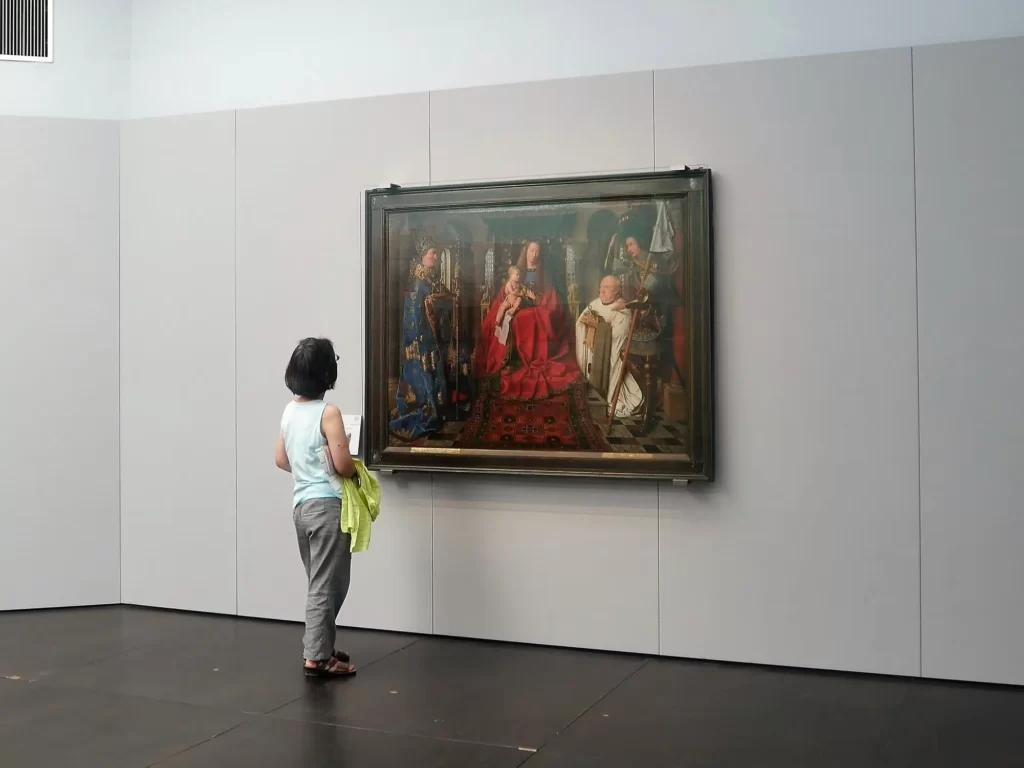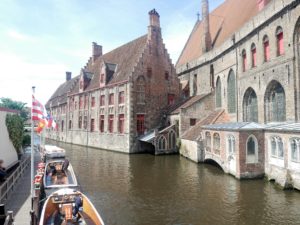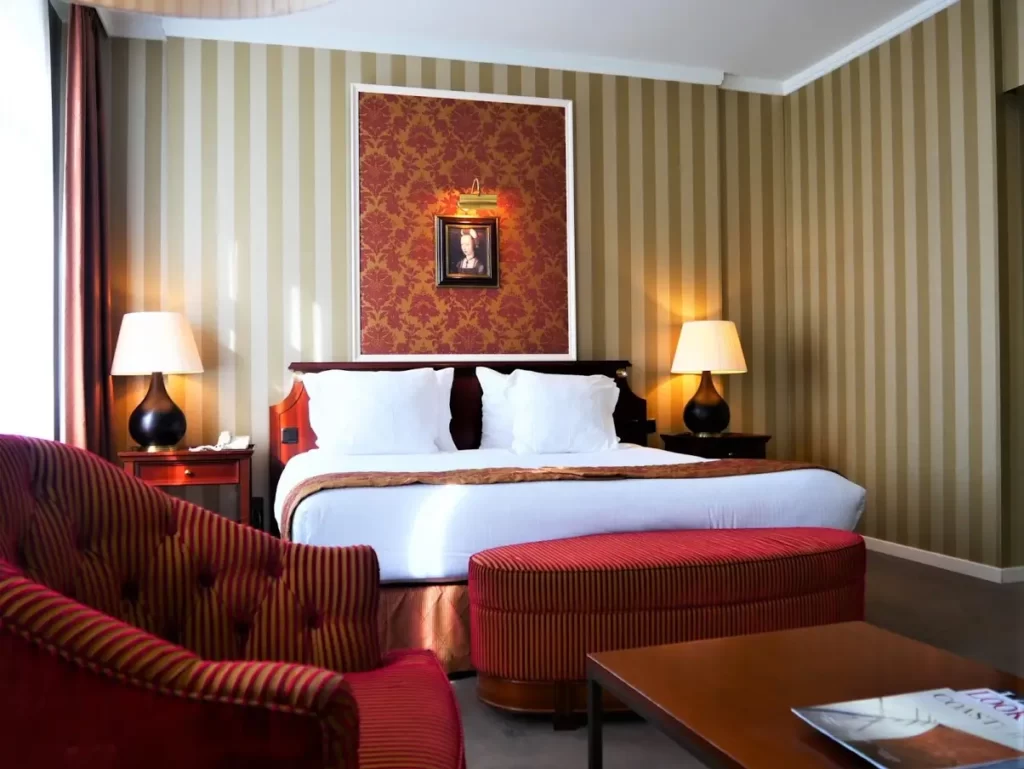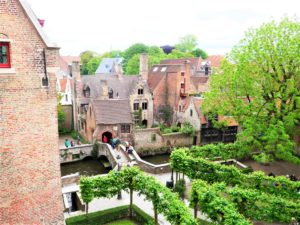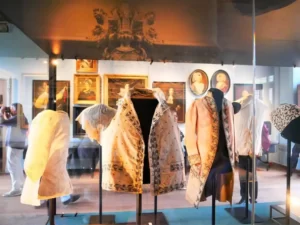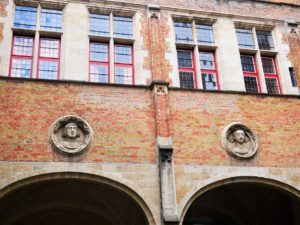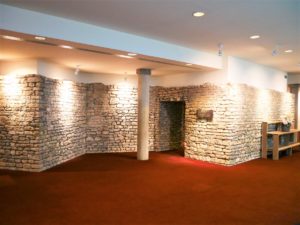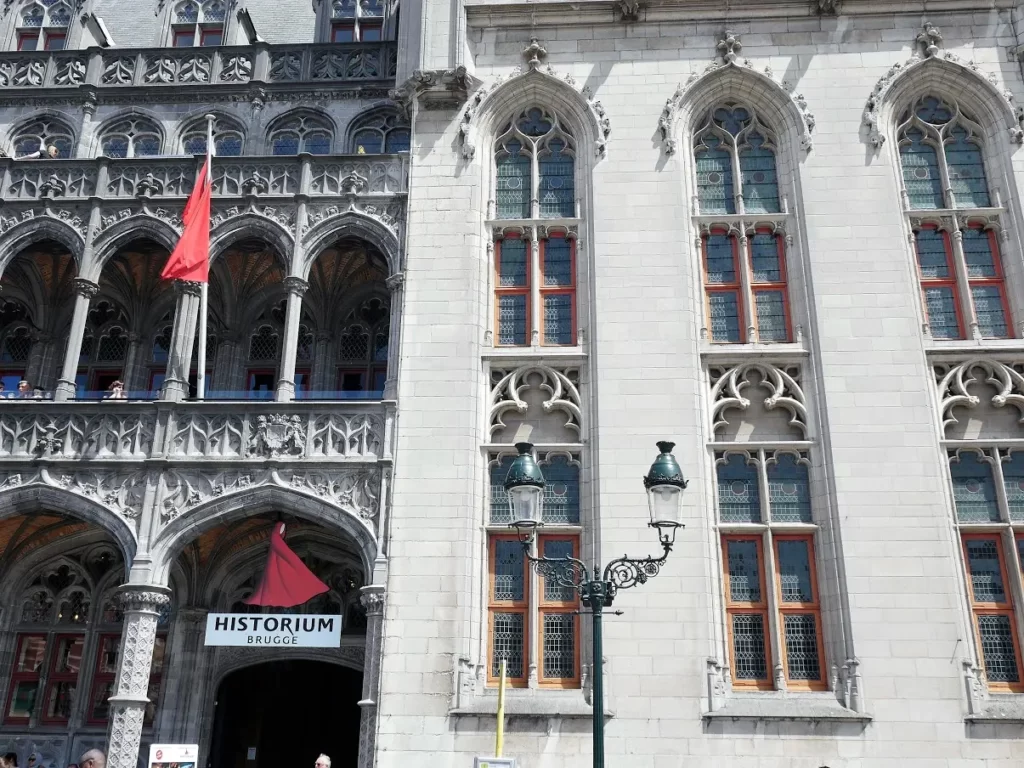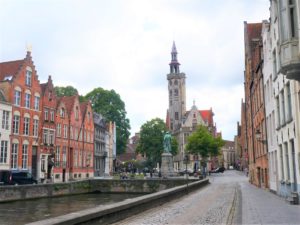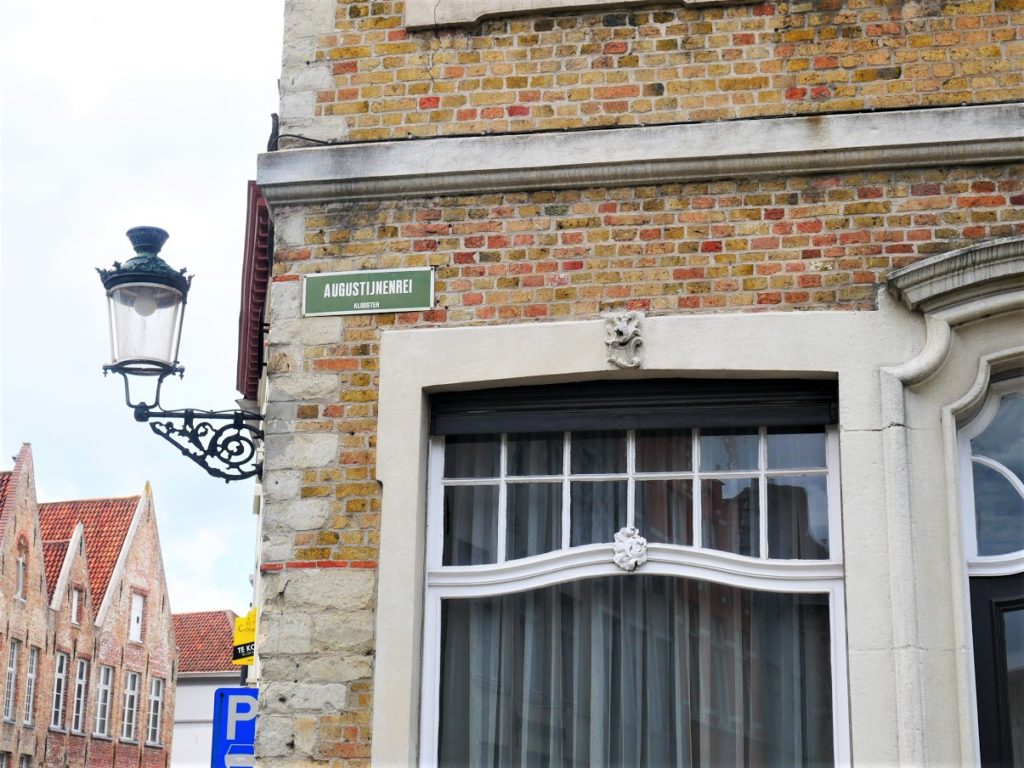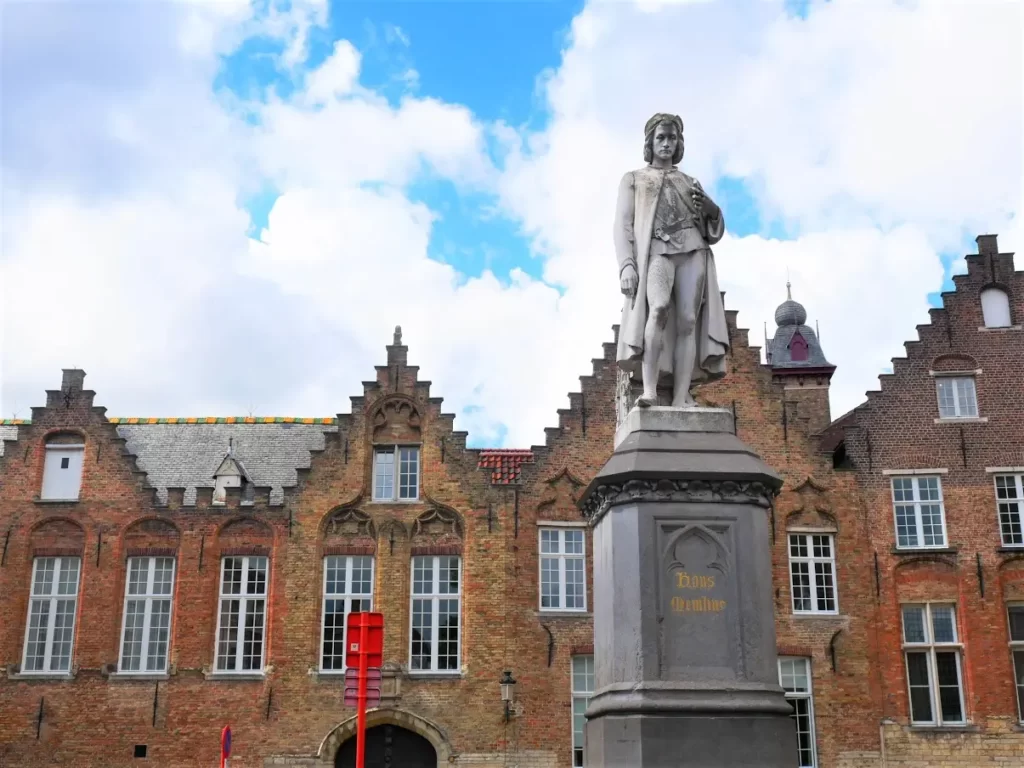A charming Belgian town of Bruges is one of the rare European cities that looks like it hasn’t changed at all throughout history. It experienced its Golden Age during the 15th century when it was a significant financial, art and cultural centre. Many buildings from that time could be still seen in the city. So, when I was there last week, I focused on exploring the Bruges Golden Age.
Visiting Bruges
I have been in Bruges many times before. But, I would always visit it on a day trip from Amsterdam and would spend only a few hours in the city. However, this time I’ve taken a train from Amsterdam (there are many options of getting there, you can check on a link here) and decided to spend a night in a city. And to be honest, I’ve discovered a completely new, more romantic and dreamy side of Bruges.
I had much more time to walk its streets, go to some neighbourhoods that are out of the city centre and explore more of the details on its medieval houses. History and an amazing art are really on every single corner in Bruges. This time I focused more on exploring Bruges Golden Age and the time of Flemish Primitives and Jan van Eyck. And it was amazing to see how many places related to them could still be found in it.
*Read more: Bruges Travel Guide
Bruges’ Golden Age
The Golden Age of Bruges was happening in the 15th century when the city was an important European financial and trade centre. It was ruled by the Burgundians, who brought their power into the city. Merchants and businessmen from all over Europe would come to do their business there. It became a cosmopolitan city where people dressed in colourful clothes speaking many different languages could be seen.
The population of Bruges was quite large for that time, which also helped the economy. It was a big market and the reason many ships from all over Europe would stop in a city to unload their cargo. Crafts and production of some excellent products like tapestry or lace are developing in Bruges as well.
Jan van Eyck & Flemish Primitives in Bruges
Bruges’ Golden Age, economic development and wealth triggered art production, as well. Many artists are coming to the city and are starting a new style, known as the art of Flemish Primitives today. With their vibrant colours, many little details depicted and new techniques they were using, they are becoming largely popular. Jan van Eyck and Hans Memling were the most famous of them. But, many painters experimenting in that new style were working in the city, too.
The Burgundian court, the clergy, wealthy citizens of Bruges and even the foreign businessmen are buying their art. Many of those famous paintings could be still seen in museums in Bruges.
# – Groeningemuseum
*Address: Dijver 12
One of my favourite museums in Bruges is also home to some of the very beautiful Flemish Primitives’ paintings. It’s located in a lovely historic neighbourhood and to get there I had to pass through some narrow cobbled streets that looked like they haven’t changed at all since they were built. You can find some pictures created by Jan van Eyck, Hans Memling, Hugo van der Goes, Gerard David or Hieronymus Bosch there. The highlight of the collection is Jan van Eyck’s ‘Madonna with Canon Joris van der Paele’. It’s probably the best place to see some of the work of Flemish Primitives in Bruges.
# – Sint-Janshospitaal
*Address: Mariastraat 38
The old medieval building of Sint-Janshospitaal is a piece of art itself. It’s one of my favourite places in Bruges because it is also linked with some of the first travellers. It was a place where 800 years ago, travellers, pilgrims and people of Bruges would be treated and taken care of. Today it’s used as a museum, and it has a beautiful collection of Flemish Primitives in Bruges. It’s home to six paintings created by Hans Memling, so definitely worth a visit.
*TIP: In a moment, there is a temporary exhibition ‘De Mena, Murillo, Zurbarán. Masters of the Spanish Baroque’ organised there. It’s not only interesting to see it because of the trade connections with Spain at that time. But, also because of the art influences going in both ways between those two countries. It’s open until the October 6th 2019, and you can read more info on a link here.
Exploring Bruges’ Golden Age
Bruges’ Golden Age and art of Flemish Primitives are not only something you can see at the museums. They could still be felt on the streets of Bruges. And you can find many buildings built during the 15th century still in the city. House of Jan van Eyck and some other Flemish Primitives could be seen there. Churches, city palaces and administrative buildings, as well. Many houses from that time are showcasing the life of wealthy people living in Bruges during the 15th century. During my two days in Bruges, I have explored some of those places, and it really felt like I stepped back in history. Here is a small Bruges’ Golden Age guide here, so you can do the same.
# – Prinsenhof – Duke’s Palace
*Address: Prinsenhof 8
Prinsenhof was built in the 15th century by Burgundian duke Philip the Good to celebrate his marriage with Isabelle of Portugal. It was much more prominent when it was made. The palace complex included a chapel, a library, a swimming pool and even a zoo. It was a seat of Burgundian rulers when they were in Bruges. But, also a place where they were receiving their distinguished guest like Thomas More, Erasmus, or painters Jan van Eyck, Hans Memling and Albrecht Dürer.
*TIP: And this is the biggest tip I have for you! Prinsenhof was completely restored and turned into a 5-star hotel in recent years. If you would like to get the best feeling of how life during the Bruges’ Golden Age looked like, I would highly recommend you giving yourself a treat and booking a night at the Duke’s Palace Hotel. I have stayed there during my two days in Bruges, and it was one of the best hotels I have ever been to.
# – Gruuthusemuseum
*Address: Dijver 17
Another highlight of my two days in Bruges was a visit to the newly reopened Gruuthusemuseum. It was under the renovation during the last five years. A beautiful city palace was home to Lodewijk van Gruuthuse, wealthy nobleman and a military leader in service of the dukes of Burgundy. He was a patron of arts and a bibliophile who built up one of the largest book collections of his time (only the one belonging to the Burgundian dukes was larger than his).
Gruuthuse Palace was built during the 15th century. Although it was slowly restored in the neo-Gothic style in the 19th century, you can still see Bruges’ Golden Age on it, so well. Lodewijk’s motto was ‘Plus es ten vous’ (‘there is more in you’), and it can be found in many places in his palace. One of its most amazing parts is a small private chapel that connects the palace with the Church of Our Lady.
Another part of the Gruuthuse Palace that left me completely breathless was a beautiful Gothic loggia, from which one of the most beautiful views in Bruges could be seen.
The ground floor of the museum is dedicated to Bruges’ Golden Age where you can see the city maps, paintings of Bruges and some other objects from that time. However, you can also learn more about the crafts and creative industries in the city during the later centuries on the upper floors of the building.
# – Hof Bladelin
*Address: Naaldenstraat 19
Another, smaller city palace built in Bruges in the 15th century belonged to Lodewijk’s friend Pieter Bladelin. It was his home, but it’s also important because it was a place where a branch of the Florentine Medici bank was housed during the 15th century.
Inner courtyard of the building looks as it did during the Bruges’ Golden Age. And a detail that was really beautiful to me were two stone medallion portraits of Lorenzo de’ Medici and his wife. They are bringing some of the first Renaissance art influences in the city, as well.
# – The Florentines
*Address: Academiestraat 1
During the 15th century, this was a house of the merchants from Florence. It was one of the three merchants houses that stood at the old Beursplein. Other two were those of the Genoese and the Venetian merchants. That particular square was the location for the trade and finance in Bruges. And the Florentines were mainly involved in banking in the city. International traders would gather in front of the Ter Beurze House which was the central inn at the old Beursplein. Since the financial market developed there, the house is giving its name to it (from the Dutch word ‘beurs’).
*TIP: The house today is home to a great restaurant ‘De Florentijnen‘. I was lucky enough to have drinks at its top floor where some of the original wooden bins could be seen. However, the interior on the ground floor is just as beautiful. And the food is perfect!
# – St. Donatian’s Cathedral
*Address: Burg 10 (basement of the Crowne Plaza Hotel)
St. Donatian’s Cathedral was one of the most famous churches in Bruges during the 15th century. One of the most famous paintings created by Jan van Eyck, ‘Madonna with Canon George van der Paele’ (today in the Groeningemuseum) was painted for it. Unusual for that time, Jan van Eyck was buried there, too. The church was demolished in 1799 during the French rule.
However, its remains and some of its stone walls could still be seen in Bruges. They are located below the Crowne Plaza Hotel at Burg Square, and they could be seen in its basement.
*TIP: If you would like to see them, go to the hotel and just follow the staircase behind the reception to the basement. The area is open to the public, and you can visit it free of charge.
# – Historium
*Address: Markt 1
Located at the Market Square, Historium is an interactive museum that will enable you to travel back in time and spend a day during the Golden Age in Bruges. You can learn about it in seven rooms with different stories. You can get your ticket on a link here.
# – Jan Van Eyckplein
*Address: Jan Van Eyckplein
At the small square next to the canal there is a statue of the most famous painter that lived in Bruges during its Golden Age – Jan van Eyck. He’s holding a distillation flask in his hand because during his career he has developed and improved the technique of oil painting.
Tower of the Poortersloge, located at the same square, was built at the beginning of the 15th century. It was a place where wealthy merchants would meet. And from where they had a view on ships with some luxurious goods like precious stones, fur, crystal or oranges arriving at the city. All of those exotic and expensive items could be seen on van Eyck’s paintings, too.
*Read more: Best Chocolate Shops in Bruges
# – Artist’s Neighbourhood
*Address: Augustijnenrei & Sint-Jorisstraat
Those streets and some smaller alleys around them were known as the artist’s neighbourhood. Many Flemish Primitives were living in the houses there. Probably the most famous one is Hans Memling, who resided in Sint-Jorisstraat.
# – Memling Statue
*Address: Woensdagmarkt
Although born in Germany, Hans Memling, later on, moved to Brussels and Flanders and became one of the leading painters in Bruges during its Golden Age. He became quite famous both for the portraits of wealthy Bruges’ merchants he was creating and for religious paintings. He was doing so well, that in the later years of his life he’s becoming one of the wealthiest people living in Bruges.
# – Jan van Eyck’s House
*Address: Gouden Handstraat 6
House in which Jan van Eyck lived with his wife Margaretha and their children, could still be seen in Bruges. It was also where his studio was and where he created many of his famous paintings. Parts of his ‘The Lamb of God’, ‘Madonna with Canon Joris van der Paele’ and a remarkable portrait of his wife, were all painted here.
Bruges is a beautiful historical town where an amazing medieval architecture could be seen on every corner. Much of Bruges’ Golden Age is still preserved in it. So, it’s a lovely opportunity to take a walk around Bruges, visit some of the museums with Flemish primitives paintings and see some of the buildings that were important during that time.
*I have visited Bruges and newly re-opened Gruuthusemuseum during a press trip organised by Visit Bruges.
*This post contains some affiliate links.




